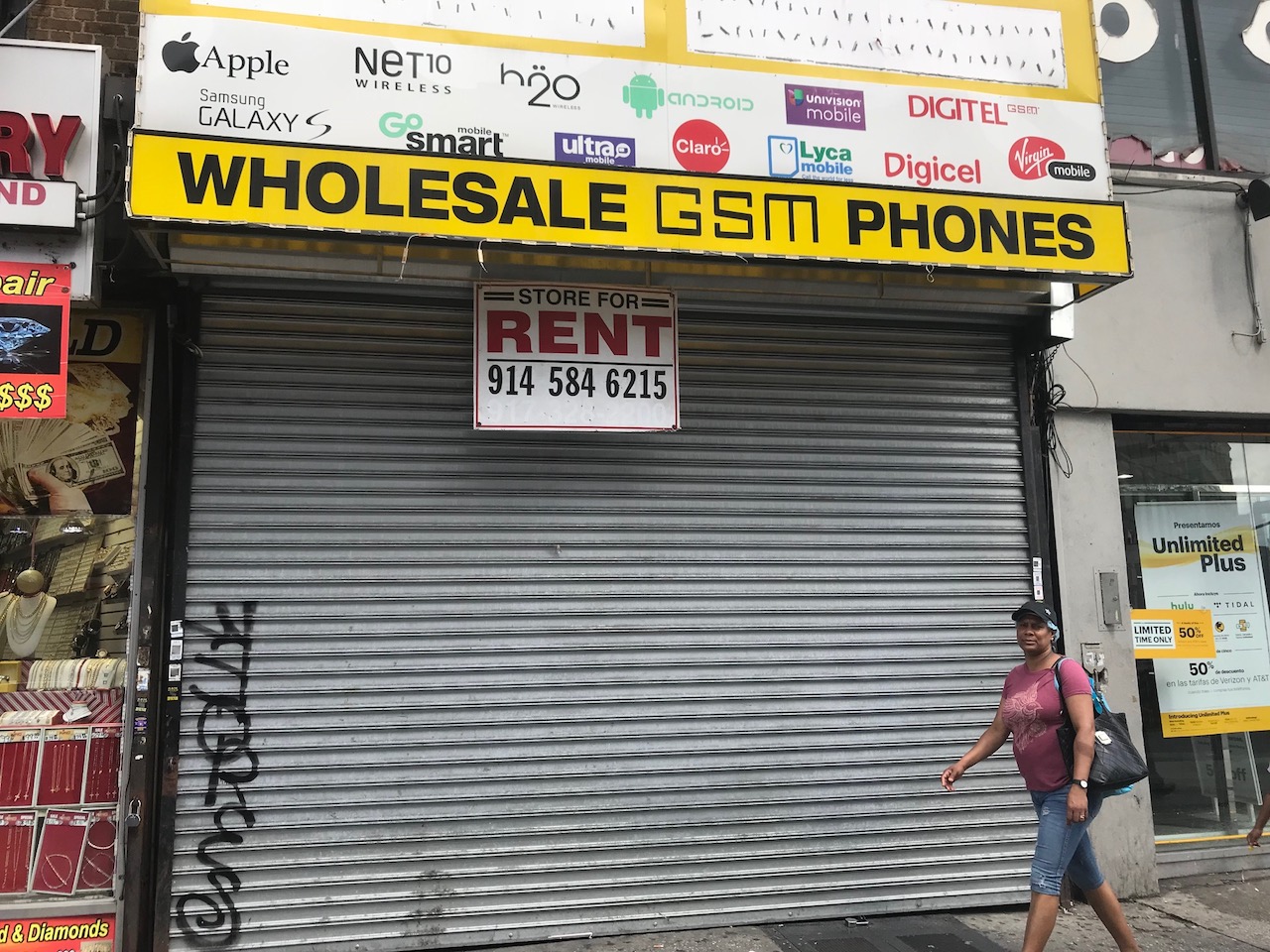
Business boosters hope a new initiative will help put a dent in the number of vacant storefronts in The Hub, while serving as a useful experiment for other city neighborhoods.
The Third Avenue Business Improvement District (BID), which is spearheading the initiative, says it is the first project in the city to track empty storefronts and pinpoint their locations.
Although the software is still being honed, early results give an inkling of its usefulness, says Michael Brady, the BID’s executive director. The technology already identified some vacant ground floor spaces for which the BID quickly found occupants, he added.
The software helps distinguish between vacancies on upper floors and on ground floors, says Brady, adding that the discrepancy is important in the Hub. At 25 percent, upper floor vacancies are among the highest in the city, while ground floor vacancies, just 6 percent, are among the city’s lowest.
The discrepancy lies in the area’s past, says Brady.
“For the past three decades or so, property owners thought that the upper floors could generate a rate of return, so they used the upper floor for warehousing, storage, or for the merchandise of the people who occupied the ground floor,” he said.
But whatever floor they’re on, local businesses are feeling the pinch, due to rising rents and property taxes on commercial buildings, which business owners are required to pay a portion of along with their landlords.
Until two decades ago, the owners of small businesses like 1-800-FIX at the corner of Third Avenue and E. 149 Street could earn enough to make a living. Abel Brea, who has owned and run the second floor electronics and repair store for 30 years, says he’s still around mainly because customers have come to know and trust him.
“Only because I’ve been in here for so long and I have a brand when it comes to this particular service that I provide, I’m able to survive,” said Brea.
Nancy Testa, who owns Capri Bakery at 306 E 149th St., says business has not been so hot this summer. Recently, she went a whole week without any business. She has more than 10 employees and doesn’t want to reduce anyone’s pay.
While walking down Third Avenue, Testa points out a vacant storefront that a phone store once occupied.
“That’s been over a year,” she said. “Another store across the street, right there, in The Hub. There’s like six vacant stores on the street. Big, good stores in a good block and they’re vacant.” She wondered if the landlords are holding onto the spaces until they can find tenants willing to pay higher rent than she or other area small businesses can afford.
The new pilot project is just one more effort to help keep small businesses like Brea’s and Testa’s solvent, said Brady, adding that each vacant storefront has its own back story. While some have given up due to the rising rents, others have left because the buildings their businesses are in are not getting needed repairs. And some who have inherited a business from a parent or grandparent are simply disinterested in keeping the business running.
“When we take a look at vacancies, we really have to understand the nuances of each vacancy because we can’t just do a broad stroke that says ‘Storefronts are vacant because landlords want money,’” Brady said. “Sometimes that’s the case, but not always.”
For those instances in which landlords do turn down reasonable offers while holding out for wealthier tenants, Brady says the new tool could help city government monitor those properties and levy fines on the landlords, as has been suggested by some political candidates and nonprofits. But “it would be a very state of affairs if tenants start using the concept of a vacancy fee as a way of being predatory for the small mom and pop property owners.”
Still, he added, “it’s our hope that Mayor Di Blasio will really take a look at vacancies and try to address them,” and that the city reconsider the implications of tax increases on small businesses.
“Every day that our small businesses are open is another day that they’re facing challenges,” he said. “They need to be helped in a comprehensive way that doesn’t help them in one hand but then smack them with a stick in the other.”
The architect behind the new technology, Anthony Q. Cursor, says that the software will be user-friendly.
“The data is designed so when you click on any of the indicators, it brings up a hierarchical order where the vacancies are,” he said. That could help prospective tenants pinpoint vacant locations that aren’t bogged down in litigation or repair backlogs, and that have the space features a tenant may be looking for.
Brady expects to have the full program with detailed vacancy information online by October.

